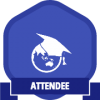Objective of last week in #DigiFoot12 course was Twitter and I waited to write this post because there were a lot of things to experiment with and learn about. Gill Ville led us-all the participants- into the world of Twitter which has become a powerful virtual teachers’ room.
She shared a very stimulating presentation which can be seen below.
Many people say that Twitter has great potential not only for providing opportunities for professional development, but also for being able to help educators gather a battery of activities, lesson ideas and tasks. But, I was still not very confident with using Twitter. I mean, I am not an egg but I am not a Twitter machine either.
Therefore I tried out the suggested tasks of the week with great joy. Following Kim’s lead first I tried to understand where I stand in using twitter. One of the tasks was visualising our Twitter foot print by using some web applications that can analyze one’s data. I made use of Visuall.Ly in order to condense mine into a cool infographic.

Kim Gille helped us to gain insight into “Literacy in Twitter” by her hands on task activities about; profile settings, search-hashtags, linking Twitter with Facebook, encryption of messages in 140 characters,saving and archiving tweets among many other things! (Thanks a million Kim)
So, I started as a “lurker” and followed tweets of other collegaues, and then, Twitter started to become a virtual teachers’ room. I have seen so many interesting teaching ideas, suggested activities, resources and links.
And that’s not all…!! Twitter can provide a platform for educators engage in discussion (chat) and collaborate on-line.
Therefore, this module of the course week has been a golden opportunity to explore Twitter but I still have lots of inverstigation to do until I become competent in using its full potential as a wonderful networking tool. I feel that I will be writing about Twitter more…
Please feel free to help me out in discovering Twitter to its full exploitation in education…














Recent Comments